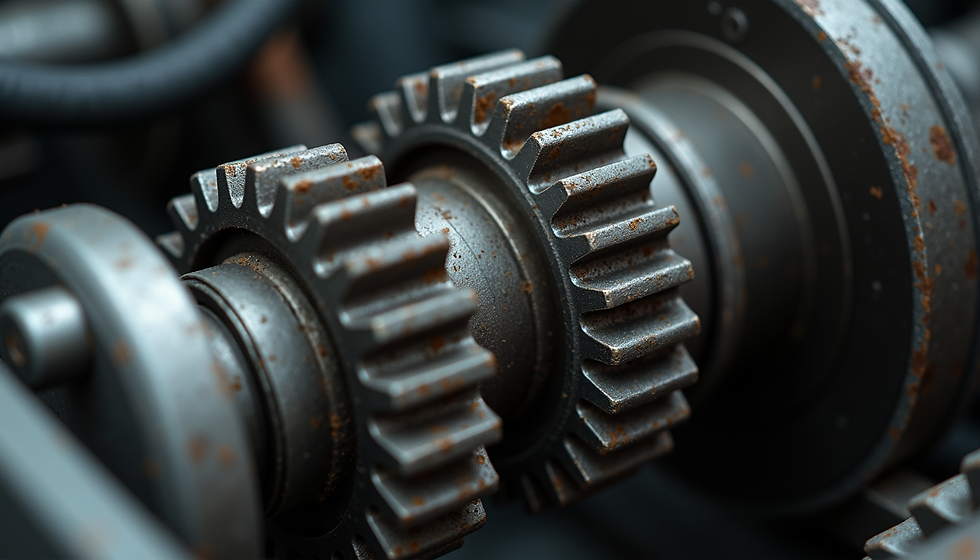10 Essential Insights into Horsepower and Torque Unraveling Engine Performance Terms
- Autolast Ghana

- Aug 22
- 4 min read
Understanding engine performance can often feel like deciphering a different language. Among the most critical terms that enthusiasts and newcomers alike encounter are horsepower and torque. These two concepts play key roles in vehicle performance, but they often lead to confusion. In this blog post, we will explore 10 essential insights that will help you better grasp these important engine performance terms.
Insight 1: Defining Horsepower
Horsepower measures how quickly work is done. In engines, it describes the engine's ability to produce energy over time. More horsepower means a vehicle can accelerate faster and achieve higher speeds.
One horsepower equals 550 foot-pounds of work per second. For context, a typical family sedan might have 200 horsepower, which allows it to reach a top speed of around 130 mph. In comparison, high-performance vehicles might soar to 600 horsepower or more, enabling speeds above 200 mph.
Insight 2: The Significance of Torque
Torque refers to the twisting force generated by the engine. It is crucial for how a vehicle accelerates from a standstill or climbs hills. Higher torque means a vehicle can move heavier loads and accelerate more quickly at lower speeds.
You can think of torque like the force used when tightening a stubborn bolt. For instance, many trucks designed for heavy towing can have torque ratings exceeding 600 lb-ft, allowing them to pull trailers that weigh over 10,000 pounds with ease.
Insight 3: How Horsepower and Torque Work Together
Horsepower and torque are different yet interconnected. Horsepower is derived from torque; it’s calculated by multiplying torque by engine speed (RPM) and dividing by a constant (5252). This means that at higher RPMs, an engine can produce more horsepower, but it may not immediately indicate how much torque it has.
For example, a muscle car might produce high horsepower at a high RPM, making it great for racing. In contrast, a diesel truck may generate substantial torque at low RPM, making it effective for towing heavy loads.
Insight 4: Types of Horsepower
Horsepower comes in several forms:
Brake Horsepower (BHP): Measures the engine's output before losses from the transmission and accessories.
Wheel Horsepower (WHP): Indicates power available at the wheels after drivetrain losses.
Understanding these distinctions helps clarify manufacturer reports. For instance, a sports car may show 500 BHP, but the WHP value after accounting for losses might be around 450, providing a real-world view of performance.
Insight 5: Torque Ratings Explained
Torque ratings are often shown in pounds-feet (lb-ft) or Newton-meters (Nm) and indicate the force available to rotate the vehicle's wheels.
Different vehicles require varying torque characteristics. For example, a typical sedan might have around 200 lb-ft of torque, whereas a heavy-duty truck could exceed 900 lb-ft. This higher rating enables trucks to haul equipment and heavy trailers with greater ease than lighter passenger vehicles.
Insight 6: Peak Power Versus Usable Power
Both horsepower and torque have peak ratings, indicating the maximum output the engine can achieve. However, peak numbers do not tell the whole story. The engine's power band—the RPM range where it delivers optimal power—is critically important.
For example, while a sports car might have a peak horsepower rating of 300 at 6,500 RPM, it may only deliver usable power within a narrower range of 4,500 to 6,500 RPM. In contrast, a truck may have lower peak numbers, but with useable power across a broader range, it remains effective for daily tasks.
Insight 7: The Impact of Engine Design
Engine design heavily influences how horsepower and torque are produced. Factors such as the number of cylinders, bore and stroke dimensions, and turbocharging affect performance characteristics.
Turbocharged engines, for instance, deliver more torque at lower RPMs than naturally aspirated engines. A turbocharged 2.0L engine might generate 300 lb-ft of torque at only 2,200 RPM, making it quicker off the line compared to a naturally aspirated engine that reaches that torque level much higher in the RPM band.
Insight 8: Horsepower and Torque on Different Types of Vehicles
Understanding the balance of horsepower and torque is essential based on a vehicle's intended use.
For example, sports cars prioritize horsepower for speed, while heavy-duty trucks emphasize torque for towing. A typical sports car might deliver 400 horsepower but only 300 lb-ft of torque, while a work truck could produce 300 horsepower and 800 lb-ft of torque, tailored for different driving needs.
Insight 9: Measuring Performance on the Road
To measure how well your car performs based on horsepower and torque, methodologies like dynamometer tests can be used. A dynamometer measures both metrics at the wheels under controlled conditions.
For example, a vehicle tested on a dynamometer might show 350 WHP and 400 lb-ft of torque, helping drivers understand the impact of modifications accurately. This data is vital when considering engine upgrades or tuning for improved performance.
Insight 10: The Future of Horsepower and Torque Measurement
As technology evolves, so do our methods for measuring engine performance. Advanced computer simulations can provide more accurate predictions of horsepower and torque ratings.
With the rise of electric and hybrid vehicles, understanding how electricity, wattage, and torque interact will become essential. For instance, electric motors often provide immediate torque, making EVs feel quicker off the line compared to traditional combustion engines.

Summing It All Up
Grasping horsepower and torque is vital for understanding engine performance. By recognizing the differences, similarities, and interactions between these terms, vehicle owners can make more informed decisions. Whether you're considering buying a new vehicle or looking to enhance your current one, the insights from this post will help you navigate the complexities of automotive performance.
Understanding these fundamental insights will deepen your appreciation for horsepower and torque, enhancing your overall driving experience. Whether you're in the market for a vehicle or eager to learn more about automotive engineering, mastering these key performance terms is your gateway to informed driving.





Comments